Sounds of World War 2
Music, Memory, and Morale on Canada’s Home Front, 1939–1945
Music once again served as a powerful cultural force during the Second World War—on the battlefield, over the airwaves, and in the hearts of Canadians across the country. In a time of global uncertainty and widespread mobilization, sound became a unifying agent. Unlike the sheet-music era of the First World War, the 1939–45 period saw a dramatic shift in how music was produced, disseminated, and experienced. Advances in radio broadcasting, commercial recordings, and film gave wartime music a reach and resonance unlike anything before.
The sonic landscape of wartime Canada reflected both a nation at war and a population in transformation. Big band swing, military marches, sentimental ballads, and morale-boosting novelty songs all played distinct roles—whether energizing troops, promoting enlistment and war bonds, or comforting those left at home. In both English and French Canada, music functioned as entertainment, propaganda, and emotional sustenance.
A Country Mobilized in Sound
By the time Canada entered the war in September 1939, national broadcasting had become a primary medium of connection. The Canadian Broadcasting Corporation (CBC), established in 1936, quickly adapted its programming to suit the wartime climate. Weekly broadcasts like Victory Parade, The National Farm Radio Forum, and Johnny Canuck’s War Album delivered a mix of news, music, and morale messaging. Live big-band performances by groups such as Mart Kenney and His Western Gentlemen became staples. Songs like “The West, A Nest and You” offered rural romance, while “We'll Meet Again,” immortalized by Vera Lynn, brought comfort to separated lovers and families.
Canadian artists, too, contributed directly to the war effort. Montreal-born Léo Le Sieur and Vancouver’s Dal Richards led orchestras that toured bases and entertained troops, while singers like Bert Niosi (“Canada’s King of Swing”) helped bring the feel of American-style jazz and swing to a Canadian audience hungry for distraction and release. French-language wartime songs by artists such as Mary Travers (La Bolduc) and Jean Lalonde played to Quebec listeners, reinforcing themes of sacrifice and hope with a distinct cultural voice.
Songs of Propaganda and Patriotism
As with World War I, wartime songs in Canada were often overtly patriotic or propagandistic. The government actively promoted music as a tool of persuasion, encouraging composers and broadcasters to write songs that celebrated enlistment, rallied support for the Allies, or encouraged thrift and victory bonds. Songs like “Keep Your Head Down, Fritzie Boy” and “We’re All In This Together” captured the public mood, reinforcing unity in the face of global conflict.
Canadian composers like Godfrey Ridout and Ernest MacMillan also contributed orchestral works and military marches with nationalistic fervor. At the grassroots level, community concerts, military glee clubs, and school singalongs kept morale high. Church basements and Legion halls echoed with patriotic refrains—"Roll Out the Barrel," "White Cliffs of Dover," and “Bless ’Em All”—as Canadians sought joy in solidarity.
Women, Music, and Wartime Expression
World War II reshaped the role of women in Canadian society, and that shift was reflected in song. As more women entered factories, farms, and the military (through the CWAC, WRENs, and RCAF Women’s Division), music began to capture both their new roles and enduring emotional burdens. Songs like “Rosie the Riveter” and “She’s a Bombardier” (though American in origin) had parallels in Canadian song culture. Female performers such as Irene Besse, Eleanor Collins, and Juliette joined radio revues and canteens, singing of perseverance and longing with conviction and flair.
While some wartime songs reinforced traditional gender roles—women as faithful sweethearts waiting for their soldier boys—others acknowledged the changing social fabric. CBC’s programming often included performances by women in uniform or those working in war-related industries, offering musical proof of their participation in Canada’s total war effort.
Overseas, Under Fire: Troop Shows and Battlefield Broadcasts
Canadian soldiers stationed abroad relied on music for emotional relief. Portable radios, gramophones, and live performances by military bands or visiting entertainers brought pieces of home to the front lines. The Royal Canadian Air Force Dance Band, later known as the “Streamliners,” toured overseas to perform swing and jazz for service personnel. The Canadian Army Show, established in 1942, also toured Europe with variety acts, comedians, and musicians such as Jack Kane and the Army Band.
Songs like “I’ll Be Seeing You” or “You’ll Never Know” became deeply meaningful, carrying the emotional weight of separation, hope, and the dream of return. These recordings were often passed between soldiers and their families, physical links forged in vinyl and shellac.
Legacy and Remembrance
The music of World War II in Canada remains a vital part of the country’s cultural memory. Unlike World War I, whose songs often faded into obscurity, many of the Second World War’s musical artifacts—both Canadian and international—continue to be played, recorded, and commemorated. From V-E Day celebrations to Remembrance Day ceremonies, songs like “Land of Hope and Glory” or “This Is Worth Fighting For” still carry emotional resonance.
Today, historical recordings, radio transcripts, and digitized 78s preserve this wartime soundscape for future generations. The Sounds of World War II playlist on CitizenFreak.com offers a curated selection of Canadian and Canadian-issued recordings from the era—some patriotic, some playful, all rich with historical meaning. It includes tracks like:
“Comin’ In on a Wing and a Prayer” – Canadian issue by the Ink Spots
“Lili Marlene” – beloved on both sides of the front, including English-Canadian versions
“The Maple Leaf Forever” – revived in wartime patriotic recordings
“I’ll Never Smile Again” – The Canadian-born success of Ruth Lowe and the Tommy Dorsey Orchestra
“When the Lights Go on Again (All Over the World)” – a symbolic wartime farewell
These songs, and many like them, offer insight into the lived experiences of Canadians during the global conflict: their fears, their hopes, and the sonic tools they used to carry on.
“In the din of industry, in the clatter of arms, it is often the quiet strains of a familiar song that lift a nation’s spirit.”
— CBC wartime broadcast, 1944
–Robert Williston
🎖️ War Songs Related to Canada
🌍 World War II
23rd Flotilla
413 Squadron
417's Lament
692 Song
A Ric-A-Dam-Doo
Admiralty House Supper Song
Alliford Bay
Artillery Alphabet
Athabaskan's Finish
The Battle of Halifax
Beneath the Barber Pole
CCF To Victory!
Drunk Last Night
Dieppe 1942
Don't Send Me Home
The Fighting 43rd
Fires Of Calais
The Gunner's Lament
How Ashamed I Was
The Maple Leaf Squadron
South of Colombo
My Only Woodbine
My Sweet Little Air Force Blue Suit
No. 5 Squadron Song
The North Atlantic Squadron
O'er the Hills of Sicily
Old King Cole (433 Squadron)
On Ilkla Moor
Onward to the Po
The Quarter Master's Stores
Prince Henry Song
Roll Along, Wavy Navy
The Saguenay Song
South of the Sangro
Subaltern's Song
The Wearin' of the Green
When I Was L.O.B.
Tracks
| Artist | Track | Title | Length | |
|---|---|---|---|---|
| Collins, Dorothy (Marjorie Chandler) | Swinging on a Star (1944) | Recordings from the Raymond Scott Collection, 1942–1954 (Vol. 1) | 02:50 | |
| Matthew Halton | Nuremberg | Dispatches from World War Two on CBC | 02:42 | |
| Compilation | Alys Robi - Tico-Tico (1944) | From Berliner to RCA Victor: The Birth and Rise of the Recording Industry in Canada | 03:06 | |
| Compilation | Robert Farnon & The Canadian Band of the AEF - March Along Joe Soldier (1945) | VE-Day Memories- Big Band Jazz Music of WW II in Canada | 00:54 | |
| The Road to Victory | Track 10 | The Voices of WW II 1939 to VE Day, 1945 | 06:04 | |
| Kenney, Mart | Ramona | Classics | 03:03 | |
| Robi, Alys | Chica Chica Boom Chic (alternative live version) | Diva: Orchestre Lucio Agostini | 02:17 | |
| Compilation | Robert Farnon & The Canadian Band of the AEF - The Very Thought of You (1945) | VE-Day Memories- Big Band Jazz Music of WW II in Canada | 03:07 | |
| White, Portia | Rise Up, Shepherd | First You Dream | 02:03 | |
| White, Portia | Red Rosy Bush | First You Dream | 02:45 | |
| White, Portia | Four and Twenty Elders | First You Dream | 02:06 | |
| Richards, Dal & his Orchestra | Sentimental Journey | Swing Is In... Vol. II | 03:15 | |
| Robi, Alys | J’attendrai | Diva: Orchestre Lucio Agostini | 01:21 | |
| Collins, Dorothy (Marjorie Chandler) | Whistling Down the Road (1942) | Recordings from the Raymond Scott Collection, 1942–1954 (Vol. 1) | 02:47 | |
| Robi, Alys | Palabras de Mujer | Diva: Orchestre Lucio Agostini | 03:41 | |
| Compilation | Guy Lombardo And His Royal Canadians, Carmen Lombardo, vocal refrain - Little Lady Make Believe (Tobias/Simon) (Victor 25823) (March 29, 1938) | We're From Canada Volume 1 | 03:03 | |
| Compilation | Mart Kenney And His Orchestra, Art Hallman, vocalist - We're Proud Of Canada (Kenney) (Bluebird B-4683) (1943) | We're From Canada Volume 1 | 03:18 | |
| White, Portia | Adieux de l'hôtesse arabe (Farewell from the Arab Hostess) | First You Dream | 04:15 | |
| Compilation | The RCAF Overseas Headquarters Dance Band - Tuesday At Ten (circa London, 1944) | Swing Canada Volume 3 Canadian Service Bands of WW II | 02:39 | |
| White, Portia | Aufenthalt (The Stay) | First You Dream | 03:15 | |
| Compilation | The Happy Gang, Eddie Allen, vocalist - Too-Ra-Loo-Rah-Lor-Rah; That's An Irish Lullaby (Shanon) (Victor 56-0006) (1945) | We're From Canada Volume 1 | 03:00 | |
| Farnon, Captain Bob | My Blue Heaven | The Lost Recordings (With The Canadian Band Of The Allied Expeditionary Force) | 02:08 | |
| Kenney, Mart | Creole Love Song | Classics | 02:37 | |
| Compilation | Mart Kenney and His Western Gentlemen - The West, a Nest and You, Dear (1938) | From Berliner to RCA Victor: The Birth and Rise of the Recording Industry in Canada | 02:54 | |
| Compilation | Alys Robi - Chica Chica Boom Chic | Canadian Divas - Swingin' Easy | 02:19 | |
| White, Portia | The Wind's Work | First You Dream | 02:57 | |
| Kenney, Mart | Wooden Heart | Classics | 02:04 | |
| Compilation | Captain Bob Farnon And The Canadian Army Radio Orchestra - Theme & I Got Rhythm (Aug 27, 1945) | Swing Canada Volume 3 Canadian Service Bands of WW II | 02:11 | |
| Kenney, Mart | I Wonder What Became of Sally | Classics | 03:02 | |
| Farnon, Captain Bob | I'm Beginning To See The Light (Joanne Dallas: vocals) | The Lost Recordings (With The Canadian Band Of The Allied Expeditionary Force) | 02:48 | |
| Compilation | Captain Bob Farnon And The Canadian Army Radio Orchestra (vocals Joanne Dallas) - I Walked In (Aug 27, 1945) | Swing Canada Volume 3 Canadian Service Bands of WW II | 02:53 | |
| Compilation | The RCAF Overseas Headquarters Dance Band - King Porter Stomp (circa London, 1944) | Swing Canada Volume 3 Canadian Service Bands of WW II | 03:07 | |
| Compilation | Mart Kennedy and His Western Gentlemen - Make Believe (Jerome Kern-Oscar Hammerstein II) | Swing Canada Volume 1 Great Canadian Dance Bands 1937-48 | 02:22 | |
| Lowe, Ruth | Tommy Dorsey and his Orchestra - I'll Never Smile Again | Tommy Dorsey and his Orchestra (Frank Sinatra, vocals) - I'll Never Smile Again | 03:09 | |
| White, Portia | Ride On, King Jesus | First You Dream | 02:36 | |
| White, Portia | I Wonder as I Wander | First You Dream | 03:26 | |
| White, Portia | The Lass with the Delicate Air | First You Dream | 02:47 | |
| Compilation | Ellis McLintock And His Orchestra - Lonesome Road | Swing Canada Volume 2 Great Canadian Dance Bands 1938-49 | 02:10 | |
| Compilation | Captain Bob Farnon And The Canadian Band Of The AEF - The White Cliffs Of Dover (April 30, 1945; July2-July 16, 1945) | Swing Canada Volume 3 Canadian Service Bands of WW II | 01:18 | |
| Compilation | The RCAF Streamliners - Embraceable You (London, 1945) | Swing Canada Volume 3 Canadian Service Bands of WW II | 04:07 | |
| Compilation | Captain Bob Farnon And The Canadian Army Radio Orchestra - Just A Prayer Away (Aug 27, 1945) | Swing Canada Volume 3 Canadian Service Bands of WW II | 02:40 | |
| Compilation | The Canadian Army Show Unit "A" - Where Or When (London, 1944) | Swing Canada Volume 3 Canadian Service Bands of WW II | 01:42 | |
| Matthew Halton | North Africa | Dispatches from World War Two on CBC | 05:04 | |
| Compilation | Ernest Seitz - The World Is Waiting For The Sunrise (1939) | Hold On To Your Hat! | 03:03 | |
| Compilation | Remembrance Day | Dispatches from World War 2 | 04:24 | |
| Mother of Pearl | I'll Never Smile Again (vocals: Eleanor Collins) (Ruth Lowe, 1939) | She Bop! A Century of Jazz Compositions by Canadian Women | 05:29 | |
| Compilation | Art Hallman and His Orchestra - A Sunday Kind of Love (Belle-Leonard-Prima-Rhodes) | Swing Canada Volume 1 Great Canadian Dance Bands 1937-48 | 03:29 | |
| Farnon, Captain Bob | March Of The Toys | The Lost Recordings (With The Canadian Band Of The Allied Expeditionary Force) | 02:30 | |
| Compilation | Dorothy Collins - Besame Mucho | Canadian Divas - Swingin' Easy | 02:50 | |
| White, Portia | À la claire fontaine (By the Clear Fountain) | First You Dream | 01:39 | |
| Compilation | Ellis McLintock and His Orchestra - Ellis in Wonderland | Swing Canada Volume 2 Great Canadian Dance Bands 1938-49 | 02:38 | |
| Collins, Dorothy (Marjorie Chandler) | Fellow on a Furlough (1944) | Recordings from the Raymond Scott Collection, 1942–1954 (Vol. 1) | 03:04 | |
| Compilation | The Happy Gang, Eddie Allen/Kathleen Stokes - The Lord's Prayer (Malotte) (Victor 56-0004) (1945) | We're From Canada Volume 1 | 02:39 | |
| Compilation | The RCAF Streamliners - Shoo Shoo Baby (London, 1944) | Swing Canada Volume 3 Canadian Service Bands of WW II | 03:03 | |
| Happy Gang | Shut the Door | Knock, Knock Who's There?…It's the Happy Gang! | 02:47 | |
| White, Portia | Der Schmied (The Blacksmith) | First You Dream | 01:04 | |
| White, Portia | Der Tod, das ist die kühle Nacht (Death is the Cool Night) | First You Dream | 02:45 | |
| Farnon, Captain Bob | Jingle Bells | The Lost Recordings (With The Canadian Band Of The Allied Expeditionary Force) | 02:17 | |
| Compilation | Captain Bob Farnon's Canadian String & Swing Band - Baia & Closing (London, January, 1946) | Swing Canada Volume 3 Canadian Service Bands of WW II | 04:25 | |
| Compilation | Phyllis Marshall - The Man I Love | Canadian Divas - Swingin' Easy | 03:26 | |
| Compilation | The RCAF Overseas Headquarters Dance Band - Theme & Semper Fidelis (circa London, 1944) | Swing Canada Volume 3 Canadian Service Bands of WW II | 04:24 | |
| Compilation | Lucio Agostini - Don’t Sit Under The Apple Tree (With Anyone Else But Me) (vocals Jack Allyson Singers) 1946 | VE-Day Memories- Big Band Jazz Music of WW II in Canada | 01:05 | |
| Compilation | Japanese Internment | Dispatches from World War 2 | 14:58 | |
| Compilation | Norma Locke - Something Old, Something New | Canadian Divas - Swingin' Easy | 03:06 | |
| Compilation | Art Hallman And His Orchestra - Beyond The Blue Horizon (Robin-Whiting-Harling) | Swing Canada Volume 1 Great Canadian Dance Bands 1937-48 | 02:37 | |
| Robi, Alys | Beguine (Begin the Beguine) | Le Tram // Beguine | 03:14 | |
| Compilation | Oscar Peterson - If I Could Be With You (1944) | Jazz and Hot Dance in Canada: 1916-1949 | 02:02 | |
| Compilation | Babs Babineau - How Will I Know | Canadian Divas - Swingin' Easy | 02:47 | |
| Farnon, Captain Bob | I Found A New Baby | The Lost Recordings (With The Canadian Band Of The Allied Expeditionary Force) | 02:15 | |
| Compilation | Guy Lombardo & His Royal Canadians - Seems Like Old Times (vocals Don Rodney & The Lombardi Trio) 1945 | VE-Day Memories- Big Band Jazz Music of WW II in Canada | 03:00 | |
| Compilation | Art Hallman And His Orchestra - Temptation | Swing Canada Volume 2 Great Canadian Dance Bands 1938-49 | 02:50 | |
| Robi, Alys | Le Tram (The Trolley Song) | Le Tram // Beguine | 02:57 | |
| The Road to Victory | Track 6 | The Voices of WW II 1939 to VE Day, 1945 | 05:18 | |
| Compilation | Japanese Internment 2 | Dispatches from World War 2 | 18:45 | |
| Compilation | The RCAF Streamliners - Minor Jump (London, 1944) | Swing Canada Volume 3 Canadian Service Bands of WW II | 02:24 | |
| Compilation | Captain Bob Farnon's Canadian String & Swing Band - That Feeling In The Moothlight (vocals Joanne Dallas) (London, January, 1946) | Swing Canada Volume 3 Canadian Service Bands of WW II | 02:23 | |
| Farnon, Captain Bob | C Jam Blues | The Lost Recordings (With The Canadian Band Of The Allied Expeditionary Force) | 02:36 | |
| Farnon, Captain Bob | Out Of This World | The Lost Recordings (With The Canadian Band Of The Allied Expeditionary Force) | 03:01 | |
| Collins, Dorothy (Marjorie Chandler) | The Surrey With the Fringe on Top (1944) | Recordings from the Raymond Scott Collection, 1942–1954 (Vol. 1) | 03:27 | |
| Compilation | Mart Kennedy and His Western Gentlemen - It Couldn't be True (Sylvia Dee-Sidney Lippman) | Swing Canada Volume 1 Great Canadian Dance Bands 1937-48 | 02:43 | |
| Robi, Alys | Guadalajara | Diva: Orchestre Lucio Agostini | 03:30 | |
| White, Portia | Velvet Shoes | First You Dream | 03:03 | |
| Collins, Dorothy (Marjorie Chandler) | Principles of Arithmetic (1942, Acetate Demo) | Recordings from the Raymond Scott Collection, 1942–1954 (Vol. 1) | 02:50 | |
| The Road to Victory | Track 2 | The Voices of WW II 1939 to VE Day, 1945 | 04:29 | |
| Kenney, Mart | Sometimes (vocals Georgia Dey) | Classics | 03:01 | |
| Compilation | Trump Davidson Orchestra - Darktown Strutters Ball | Swing Canada Volume 1 Great Canadian Dance Bands 1937-48 | 02:43 | |
| Compilation | Capt. Bob Farnon And The Canadian Band of the AEF - Begin the Beguine (Cole Porter) | Swing Canada Volume 1 Great Canadian Dance Bands 1937-48 | 03:18 | |
| Kenney, Mart | No Strings Medley | Classics | 02:46 | |
| Farnon, Captain Bob | When You And I Were Young, Maggie | The Lost Recordings (With The Canadian Band Of The Allied Expeditionary Force) | 02:36 | |
| Compilation | Deanna Durbin - Its Foolish But Its Fun | Canadian Divas - Swingin' Easy | 02:40 | |
| Kenney, Mart | Mart Kenneys Classics | Classics | 03:40 | |
| The Road to Victory | Track 9 | The Voices of WW II 1939 to VE Day, 1945 | 05:06 | |
| Richards, Dal & his Orchestra | On The Sunny Side of the Street | Swing Is In... Vol. II | 03:03 | |
| Compilation | Dick Todd, baritone Orchestra conducted by Leonard Joy - I'm Old Fashioned (Mercer/Kern) (Bluebird B-11577) (July 22, 1942) | We're From Canada Volume 1 | 03:13 | |
| Compilation | Operation Overlord | Dispatches from World War 2 | 06:48 | |
| Matthew Halton | In Germany - Canadian Troops taking Uedem, Germany | Dispatches from World War Two on CBC | 04:55 | |
| Kenney, Mart and his Orchestra | Get Your Wings (Fox Trot) | We're Proud of Canada // Get Your Wings (Fox Trot) | 02:45 | |
| Compilation | Bert Niosi's Orchestra - You're the Cause of it All | Swing Canada Volume 2 Great Canadian Dance Bands 1938-49 | 04:04 | |
| White, Portia | O Wasn't That a Wide River | First You Dream | 02:39 | |
| Kenney, Mart | You Belong to My Heart (vocals Norma Locke) | Classics | 03:04 |
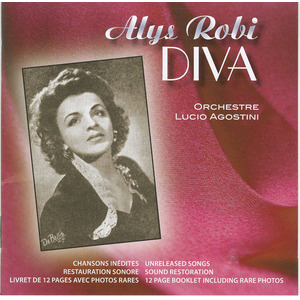
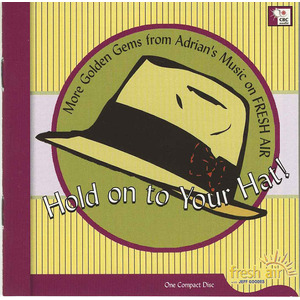
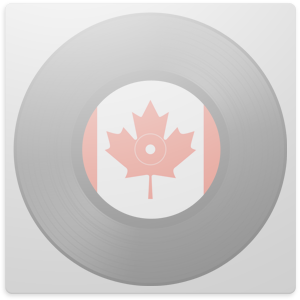


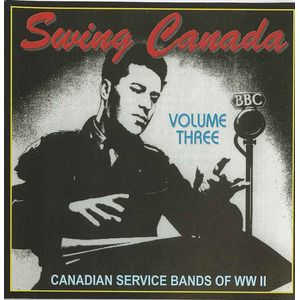
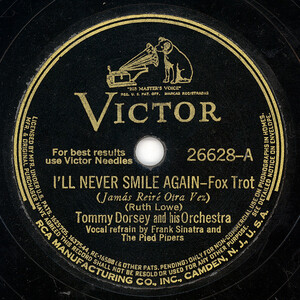
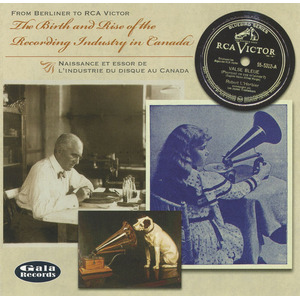
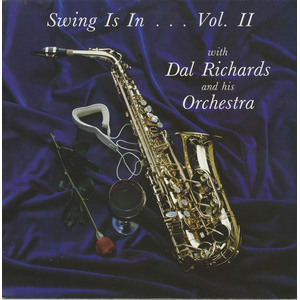
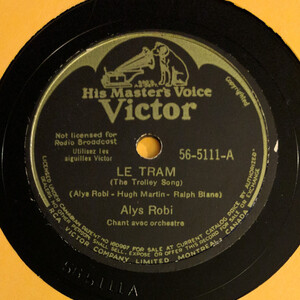
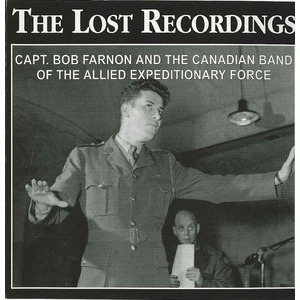

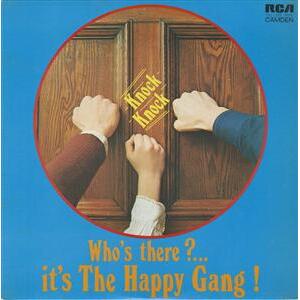
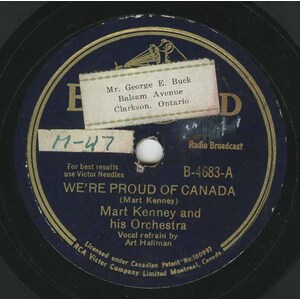
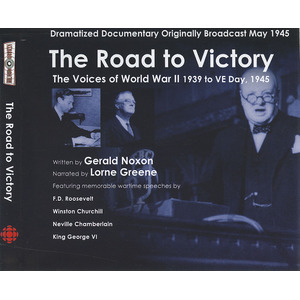

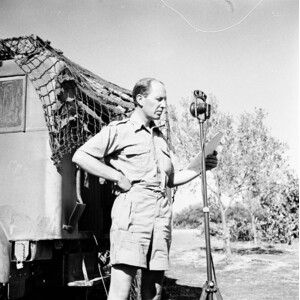
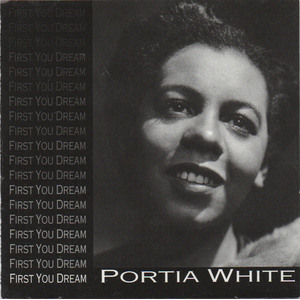

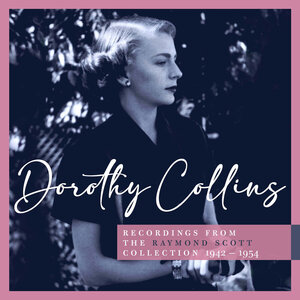
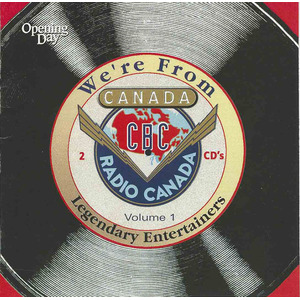

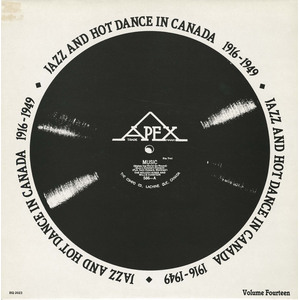
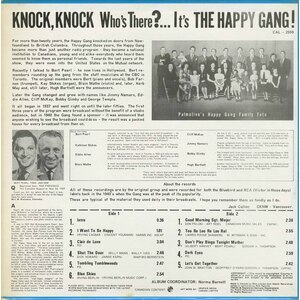
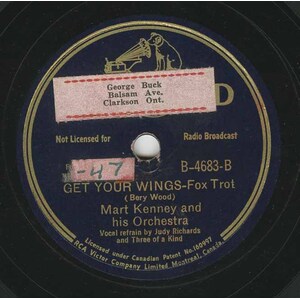
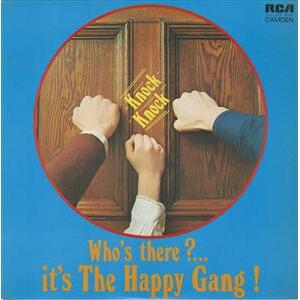
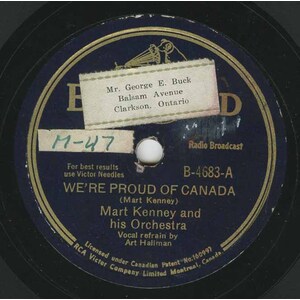
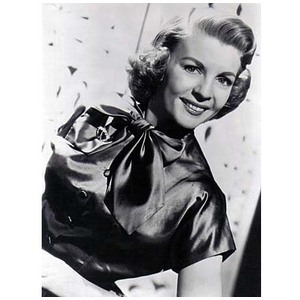
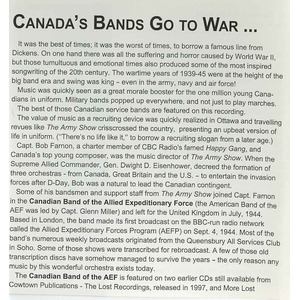
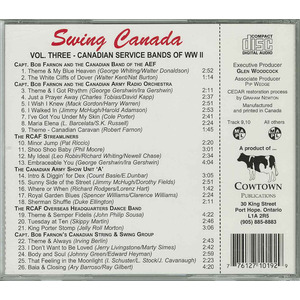
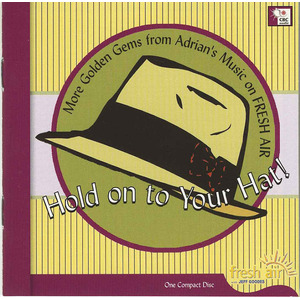
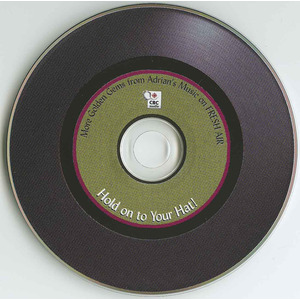
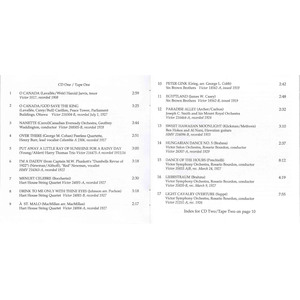
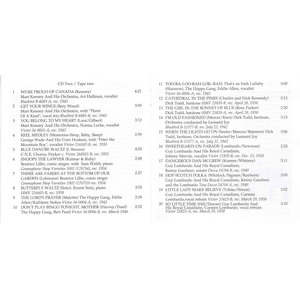
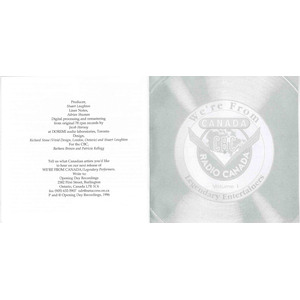
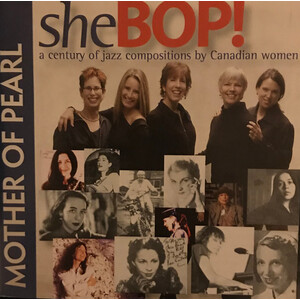
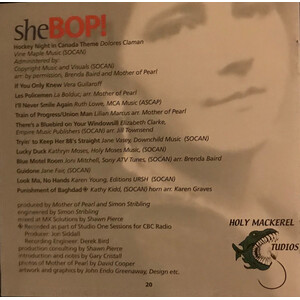
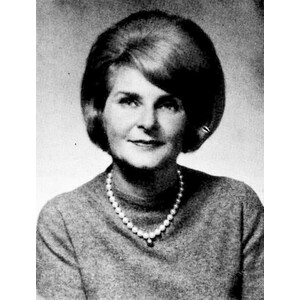
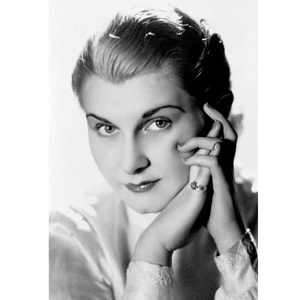


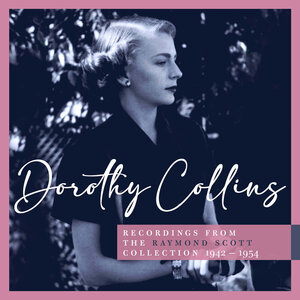

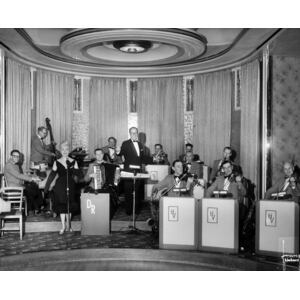

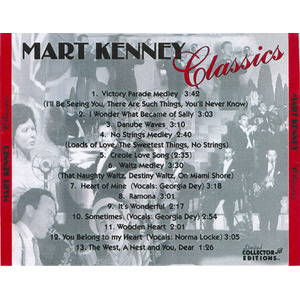
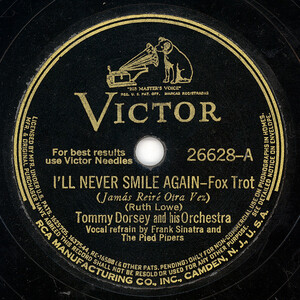
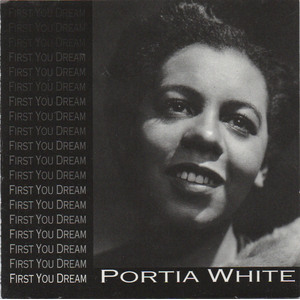
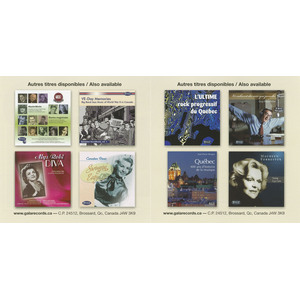
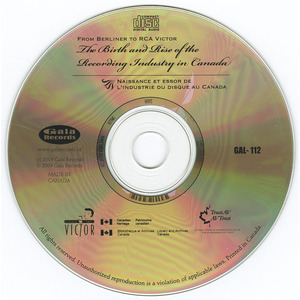
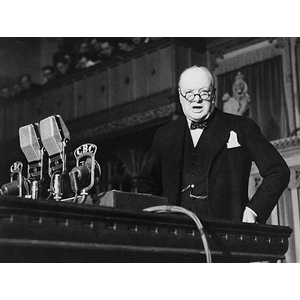
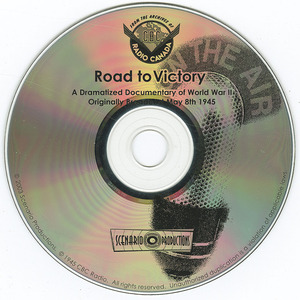

No Comments